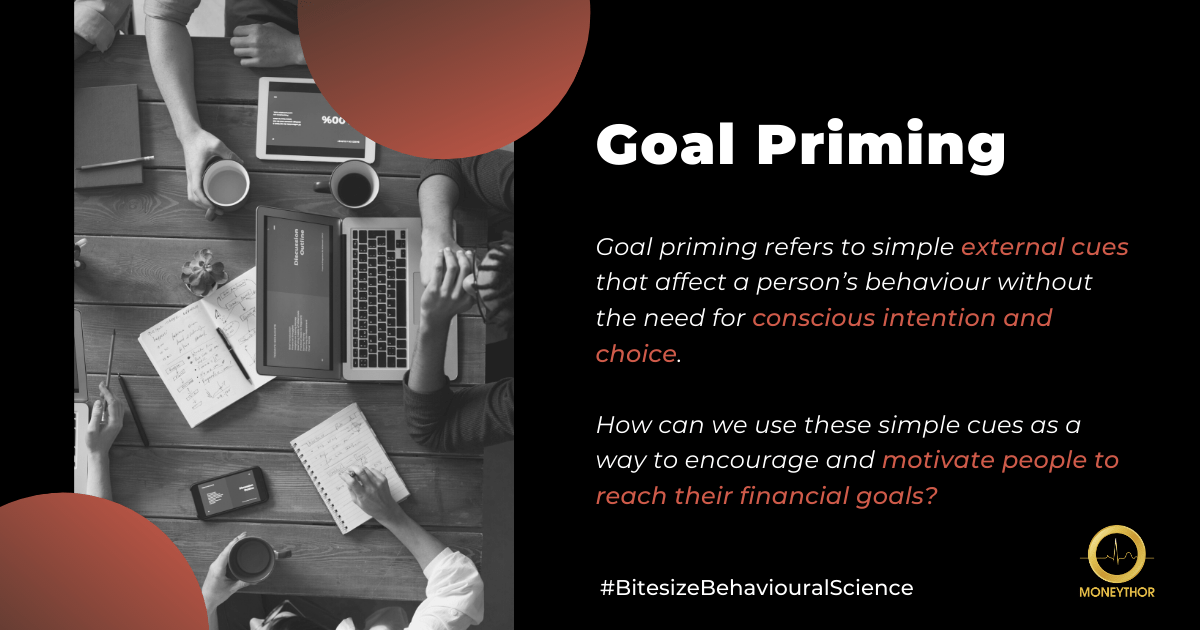There is a constant internal battle between our best intentions and our sudden impulses. As people, we struggle to always make conscious decisions that are in our best interests and often choose the more tempting short-term option over something that would have supported our long-term goals.
In the case of financial decisions, when we have conflicting long-term goals, e.g. save for a house deposit and short-term hedonic goals, e.g. purchase a games console, both cannot be satisfied at the same time and what can happen in this situation (particularly when there are tempting environmental cues promoting the games console option), is that the spontaneous short-term goal is activated and the long-term goal of buying a house is inhibited.
Many academics have tried to understand how people set and pursue goals and the reasons why they often forget about them when a more appealing short-term option emerges. While some research suggests that goal-dedicated behaviour is solely the result of conscious choice and will, there are others that show the value of simple external cues that affect a person’s behaviour without the need for conscious intention and choice. How can we use these simple cues or goal priming as a way to encourage and motivate people to continue on their path and reach their financial goals?
What is goal priming?
“Goal priming refers to the activation of a goal by external cues which can affect information processing and behaviour in an attempt to pursue a primed goal”.
What this means is that cues in the environment can lead to goal-directed behaviour without the need for conscious intentions. Goal priming can be thought of as an intervention tool that strategically influences behaviour in line with an individual’s long-term goals.
In order for goal priming to work there are three factors that should be considered:
- The individual must already be motivated by the goal i.e. the person saving for a house deposit must want to own a house in the end;
- Priming is most effective around the time that a decision is being made i.e. just before the purchase of the games console; and
- It should be clear what goal-directed behaviour the individual should take in order to reach their long-term goal i.e. save money for deposit rather than buy the games console.
When applied correctly, goal priming leads to better long-term financial decision-making and reduces the likelihood of irrational expenditure, but how can we use goal priming to encourage improved financial decision-making?
Enabling customers to set up goals through a bank’s digital channels (online banking or mobile app) allows them to define their long-term goals and helps them to pursue them by setting up regular savings amounts. Once individuals have decided on their goals, we then know that they are motivated to achieve them and so can create some external cues to help them along the way.
Goal reminders
When individuals log into their digital banking app, reminders of their long-term goal can appear alongside how much they have saved to date. These simple cues will keep their goal top of mind and should lead to goal-directed behaviours and reduce the likelihood of impulse buying.
Goal Advice
Adding notifications with links to external articles about the goal e.g. advice on saving for a mortgage or current mortgage rates can help to keep the goal in mind and encourage further saving.
Cashflow Notification
Informing individuals when they have surplus cash left at the end of the pay cycle and encouraging them through content and notifications to save that money will help them achieve their long-term goal.
All of the above notifications will work best just before an individual is about to make a purchase decision, so this content could appear at the time their salary is deposited or their regular amount is moved to their savings account.
Long-term goal setting, even with the best intentions at the start, can fall apart over time as short-term options become more appealing. By understanding how people approach goal setting and the hurdles that stand in their way, we can provide cues and notifications that help and support them to achieve their goals and manage their finances effectively.

